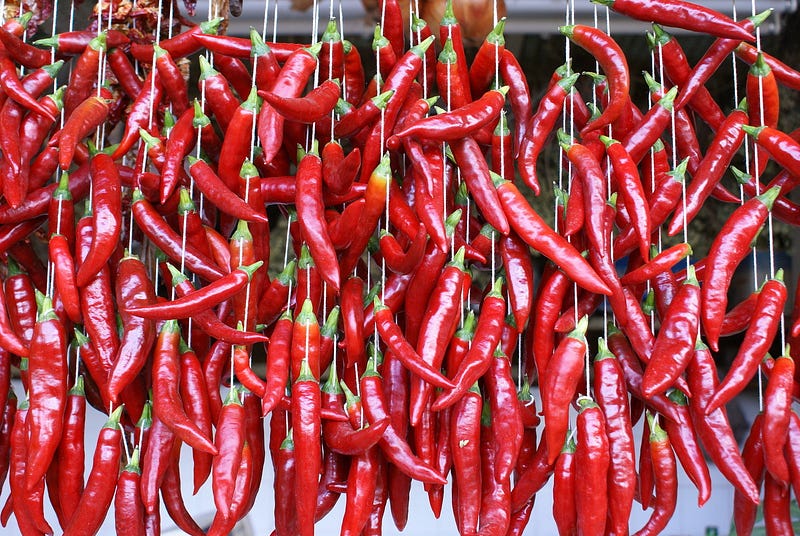The Power of Spice
By Amanda Bell, Biology and Computer Science, 2024

Why do spicy foods make our bodies sweat, nose run, and mouth burn? Does this mean that spicy heat is the same as physical heat? Not exactly; however, they both produce similar physiological responses.
In a study comparing the effects of spice and physical heat on flavor, researchers from Cornell University discovered that the spicy molecule capsaicin, found in peppers, activates the same receptor as warm food. This receptor warns the brain about potentially harmful temperatures in the mouth. Activation of this receptor releases a protein called CGRP. CGRP causes the release of serotonin, a hormone that enhances the intensity of sour foods, but inhibits bitter and sweet flavor. However, capsaicin inhibits bitter flavors three times more than heat does. This also allows for interesting flavor combinations; for instance, chocolate is bitter, and is sometimes combined with cayenne pepper in chocolate bars and desserts.
Researchers from Cornell University discovered that the spicy molecule capsaicin, found in peppers, activates the same receptor as warm food.
With regard to the rest of the body, the chemicals in spicy foods trigger heat receptors on the skin that transmit information to the brain. This information tells the brain to cool the body down even though the temperature of the environment is not increasing. As a result, the body sweats and the blood vessels dilate, increasing blood flow and releasing heat into the environment. This causes the skin to flush as a result of widening capillaries.
Despite the burning sensation of spice, we continue eating spicy foods because the thrill often outweighs its negative effects. Sometimes, just a few drops of that sriracha hot sauce is enough to make any meal exciting.
DOI: 10.1016/j.physbeh.2016.12.015
